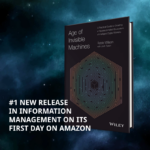
post
September 29, 2022
Mushroom Trip: Intelligent Communication is the Fabric of Hyperautomation
Diving deep into the heart of hyperautomation is like taking a mushroom trip in the woods. Coming up for air, you realize that the trees, the soil, and the fungus exist in ways that go far beyond what you see with your eyes. They are all vibrating, all interconnected—the fruits of ancient orchestrations. Whether you reach this state of awareness on a porcini forage or a psilocybin leap, mushrooms are of particular significance. Mushrooms blossom upright on the forest floor, but they also spread a threadlike web underfoot connecting with other fungi and the root systems of trees and plants to form a vast resource-sharing network called mycelium. Sprawling, understated, and mighty, mycelium is an excellent blueprint for the work of hyperautomation.
Hyperautomation is Gartner’s term describing “a business-driven, disciplined approach that organizations use to rapidly identify, vet and automate as many business and IT processes as possible.” You need to create as many process automations as possible—as quickly as possible—and always be iterating forward with the goal of making the automations more intelligent. Like a healthy forest, there are many elements at play with hyperautomation, making it extraordinarily dense. Like a healthy forest, hyperautomation needs its own version of mycelium. Hyperautomation can only thrive with an intelligent communication fabric (or ICF as we sometimes call it) connecting people, systems, and things in meaningful ways. Where mycelium is a fibrous organic web that transmits electric pulses and nutrients, an intelligent communication fabric is a composable micro services architecture with NLP/NLU capabilities, conversational memory, and deep channel integrations.
The “communication” in this intelligent fabric is a conversational interface that gives anyone easy access to the technologies being orchestrated underneath. These interactions are like the conversations we have with other people. They use linguistics (text, speech) as well as extra linguistics, including audio, visual, and haptic cues. I discuss this in greater detail in my new book, Age of Invisible Machines (Wiley), but a sophisticated yet ultra-familiar mode of communication quickly bridges the gap between humans and machines.
Beyond the interface, this fabric offers such a thorough and robust level of connectivity that it can be used to sequence technologies to create automations that far outperform what humans alone are capable of. That’s the “intelligent” part of the communication fabric. The goal with conversational AI should always be to identify automations that improve on human processes. This doesn’t mean that AI replaces workers. It means workers, using a conversational interface, take part in designing and evolving the automations that free up their time to identify more opportunities for automation and, more importantly, opportunities to create.
Imagine a world where self-driving cars are all over the road, busily getting people from point a to b. Now imagine an intelligent communication fabric allowing all of these cars to communicate with one another in real time. Not only that, these cars can also connect to other machines out in the world, like stop lights, toll booths, and car washes. The cars are also connected to current information about traffic patterns. The cars can even predict events that lead up to accidents and adjust to mitigate risks. This is hyperautomation providing a thoroughly better-than-human experience (BtHX).
Here’s one more puzzle piece: self-driving cars won’t achieve wide adoption until they are able to outperform humans. Parity won’t be enough, they need to become better drivers than humans are. The same threshold exists for conversational AI and hyperautomation. Wide adoption will only come with better-than-human experience. Until interacting with a bot is more rewarding than waiting longer for a human’s help, people will choose the old way. You don’t need fully autonomous driving to benefit from an intelligent communication fabric—that level of automation might even prevent fully realizing its benefits—but a wealth of opportunity comes from connecting everything. BtHX only materializes where an intelligent communication fabric is present—sharing a vast multitude of resources across an entire organization.
Stay up to date
Latest Articles

OneReach.ai Named a Leader in the IDC MarketScape for Conversational AI Software 2023
December 18, 2023



